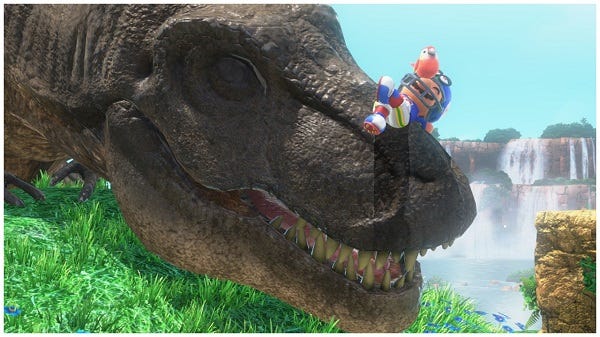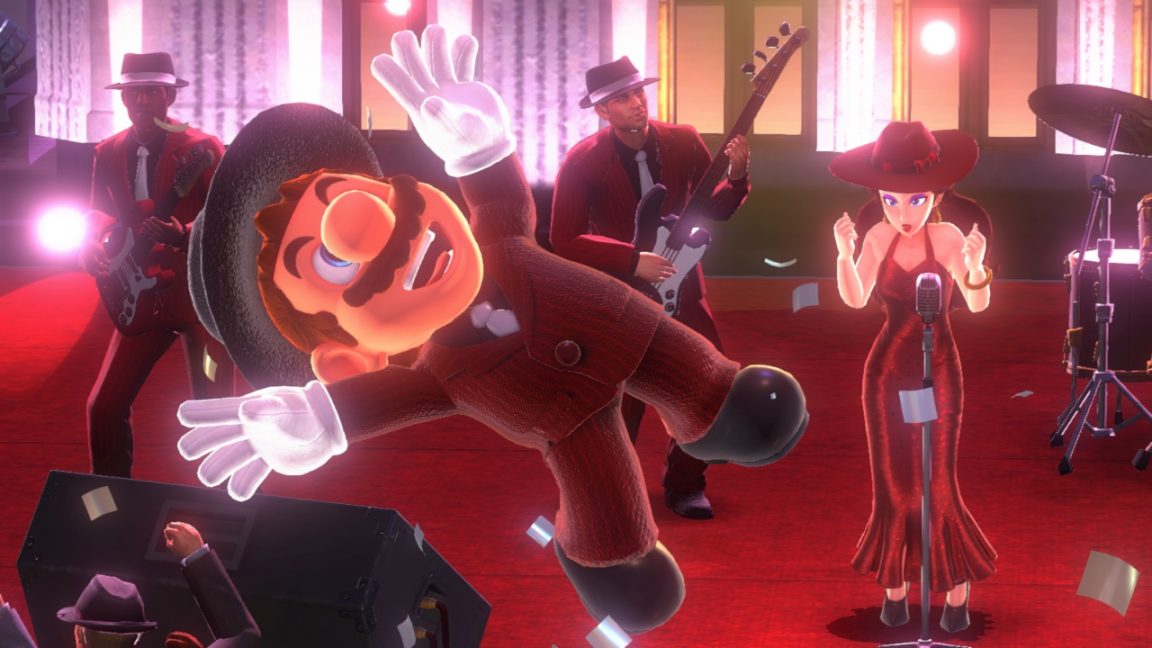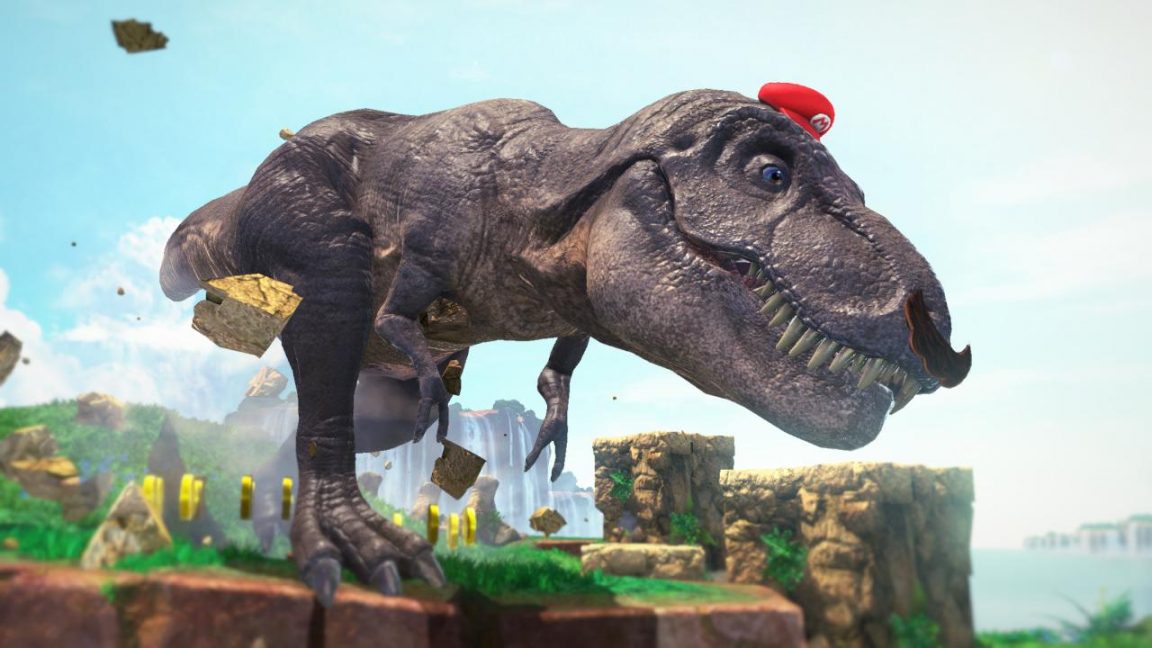Super Mario Odyssey is Nintendo's bold attempt at bottling the weirdness of travel
Are you acquainted with the idea of the uncanny? It’s the sensation you get when something familiar isn’t quite right. The unease you might feel when seeing a zombie, or a videogame NPC who drifts across the landscape because their animations aren’t firing properly. For some, it’s the creeping dread they get watching the first released footage for Super Mario Odyssey.
That announcement trailer, back in 2017, opened on a sunny day in New Donk City - a high-fidelity recreation of New York, replete with high rise buildings, billboards, and yellow taxis. Then out popped Mario from a manhole, no more at home in this new photorealistic realm than the Disney princess who arrived in New York the same way in Enchanted. Worse, it turned out New Donkers were naturally proportioned people who bore no resemblance to Mario, a squashy homunculus by comparison. Nintendo’s new disregard for the cartoon aesthetic of the Mushroom Kingdom begged a horrifying question - if these were humans, what was Mario?
Despite the confusion, Odyssey has sold over 13 million copies at last count. I’d like to suggest that these 13 million players didn’t simply tolerate the game’s jarring art direction - they came to understand it, consciously or not.
What many couldn’t have known initially was that this uncomfortable juxtaposition was a deliberate effect. It’s not just New Donk City - Mario doesn’t fully belong in any of the kingdoms he visits over the course of the game. Even the overtly stylised levels, like the faceted and pastel-coloured Luncheon Kingdom, simply don’t match the protagonist in the way his environments have in the past.
“The fact that there are realistically proportioned human beings was a result of the desire to express the kind of strange feeling you might get when travelling to a new place,” Odyssey producer Yoshiaki Koizumi told the Verge. “Seeing something that you've never seen before, and encountering unfamiliar things, which in this game Mario is doing.”
That feeling will be relatable to anybody who’s taken a holiday in a foreign country, or moved to the other side of the world. This is what they call culture shock, and you can experience it on the ride from an airport to a hotel, as thousands of everyday objects are suddenly rendered unfamiliar: adverts blast your brain with the symbols of an unknown language, road signs take different shapes and fonts, and the sirens of emergency service vehicles sing alien tunes. Adapting to a new place can be exhausting, and exciting, and it’s that sense that Odyssey seeks to capture.
You can see it especially in the Lost Kingdom, a lush Central American style island where you can’t roll down a hill without smacking your head against a fossil. A waterfall cascades between the ribs of a triceratops skeleton, and the star of the show is a tyrannosaurus rex that looks as if it walked straight out of Jurassic World. Evoking that distinctive pop cultural predator was a deliberate act of reference for Nintendo, designed to throw players out of the comfort of the Mushroom Kingdom.
“If Yoshi and the T-rex met and looked at each other, they'd probably both be kind of puzzled,” Koizumi said. “The gap between what people are familiar with as a dinosaur that lived on this planet, and what you would normally expect to find in a Mario game is, for us, a way of achieving that sense of surprise that fits into the overall theme of travel.”
You’re not the only one travelling in Odyssey. Look around its worlds and you’ll find NPCs out of place - mermaid-like Lochladies touring the dungeons, and New Donk taxi drivers in the desert, wearing garish sombreros like eager tourists. Once you’ve finished the game, a central character picks up a suitcase and travels from Kingdom to Kingdom, admiring the views.
Mario is chasing after Peach as he always has, of course, but Bowser’s wedding is just the destination - everything in his luggage suggests this is a journey for journey’s sake. Check your map and you’ll see it’s actually a brochure folded open, and its outer pages are filled with advertising copy for the local sights.
The Odyssey itself, an airship shaped like the top hats of the Cap Kingdom, fills up with paraphernalia from Mario’s travels - a model skyscraper depicting New Donk City, cutlery from the Luncheon Kingdom, and nesting dolls styled to look like the rolling yetis of the snow level. You can say they’re mementos, but let’s call it what it is: tourist tat. The only thing our favourite plumber is missing is a permanent splodge of sun cream on the end of his nose.
3D Mario games are made to drive hardware sales, and Odyssey is the perfect game for its system; as the first handheld home console, the Switch is about travel too. Thanks to its uncanniness, Odyssey is the ideal thematic accompaniment.




